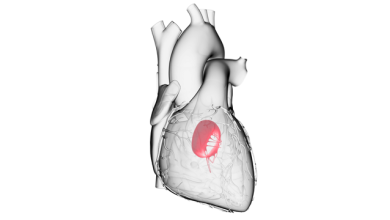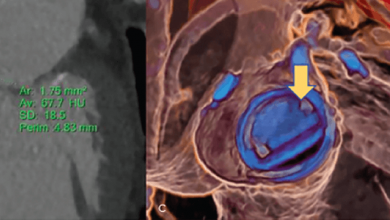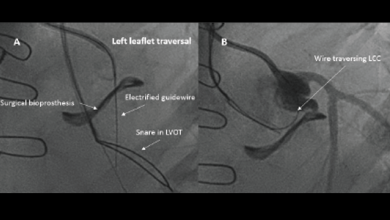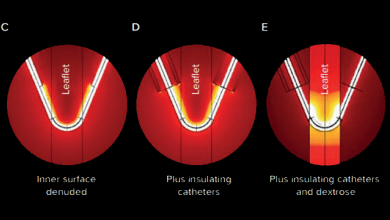Search results
Author(s):
Ahmad Younes
,
Guilherme Ferragut Attizzani
,
Ankur Kalra
Added:
3 years ago
Transcatheter aortic valve replacement (TAVR) is a recent innovation that has transformed the care of patients with symptomatic severe aortic stenosis. It has emerged as an alternative for surgical aortic valve replacement (SAVR) in prohibitive-, high-risk, and more recently, intermediate-risk surgical patients. More than 200,000 TAVRs have been performed in 65 countries around the world.1
As…
View more
Author(s):
Nehal Dhaduk
,
Adib Chaus
,
David Williams
,
et al
Added:
1 month ago
Author(s):
Mirvat Alasnag
,
Waqar Ahmed
,
Ibrahim Al-Nasser
,
et al
Added:
2 years ago
Author(s):
Payam Pournazari
,
Su Min Chang
,
Stephen H Little
,
et al
Added:
1 year ago
Valve-in-valve TAVR
Author(s):
Emily Perdoncin
,
Gaetano Paone
,
Isida Byku
Added:
2 years ago
Article
Author(s):
Michael F Morris
,
Philip A Araoz
Added:
3 years ago
Mitral valve dysfunction is the most common cause of valvular disease in the US.1 Although echocardiography is the primary non-invasive modality for visualizing the mitral valve, advances in technology continue to allow for improved evaluation of mitral disease with magnetic resonance imaging (MRI) and computed tomography (CT).2,3 Currently, the role for MRI and CT assessment of the mitral valve…
View more
Author(s):
Ajit Yoganathan
,
Fotis Sotiropoulos
Added:
3 years ago
Background
Since the first successful implantation of a prosthetic heart valve four decades ago, over 50 different designs have been developed including both mechanical and bioprosthetic valves. Today, with over 200,000 implants worldwide each year, the most widely implanted design is the mechanical bileaflet prosthesis. Several other mechanical valves are currently available and many of them…
View more
Author(s):
Jaffar M Khan
,
Toby Rogers
,
Adam B Greenbaum
,
et al
Added:
3 years ago
Author(s):
Astrid Apor
,
Andrea Nagy
,
Anikó Nagy
,
et al
Added:
3 years ago
Abstract
Mitral regurgitation (MR) is the most commonly found valvular lesion in echocardiography laboratories. Moderate and severe mitral regurgitation have proven to be associated with increased morbidity and mortality, and surgical reconstruction is recommended in severe cases whenever feasible. Three-dimensional echocardiography (3DE) is superior to conventional echocardiography in the…
View more
Author(s):
Michael L Ridner
,
Mark E Davis
Added:
3 years ago
Since 1999, cardiac computed tomographic angiography (CCTA) has evolved into the most innovative approach to cardiac imaging to emerge in over 30 years. The adoption and application of this remarkable technology represents a true revolution in the evaluation of patients for cardiac problems. The evaluation of patients with potential cardiac problems traditionally uses a variety of non-invasive or…
View more














